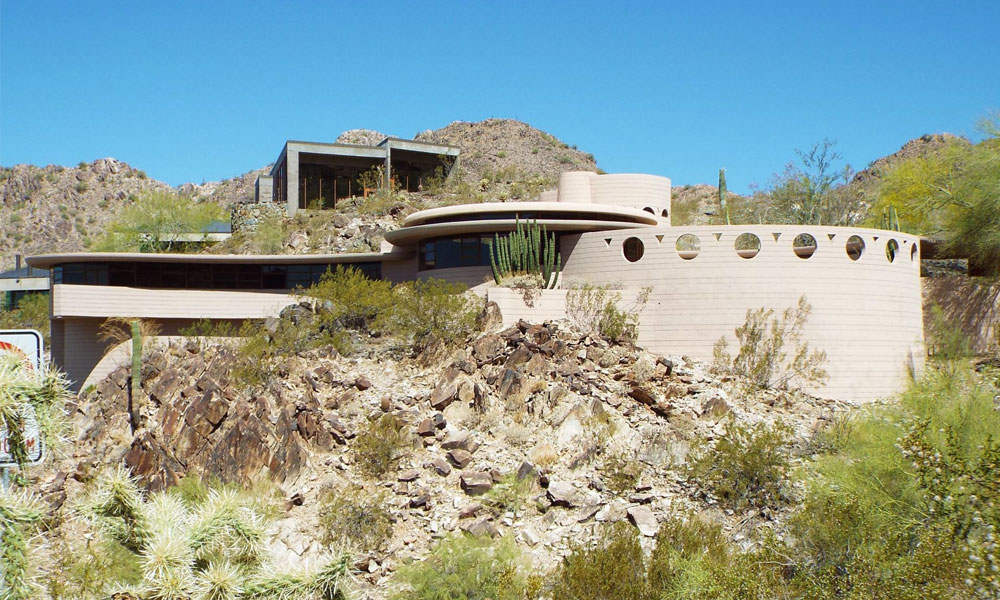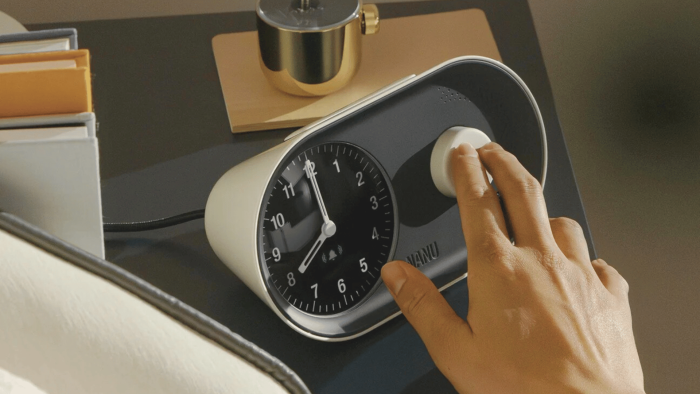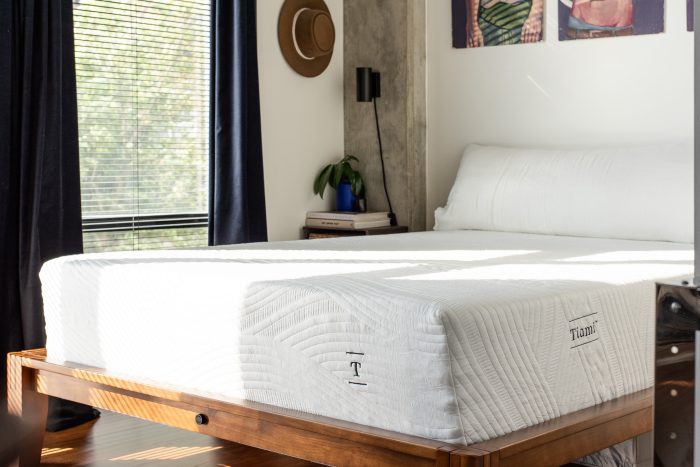Frank Lloyd Wright is considered the one of the greatest American architects of all time. In his lifetime, he created a very distinctive style of architecture he called Prairie School, and was the lead designer of over 1,100 beautiful buildings. He utilized many different styles of design in his homes, and was famous for using the existing landscapes of every property to make the most spectacular parts of his overall design of every single home. One look at any of his houses and it’s easy to understand why, to this day, he’s still considered one of the greats. Below, you’ll find a few of our favorites.
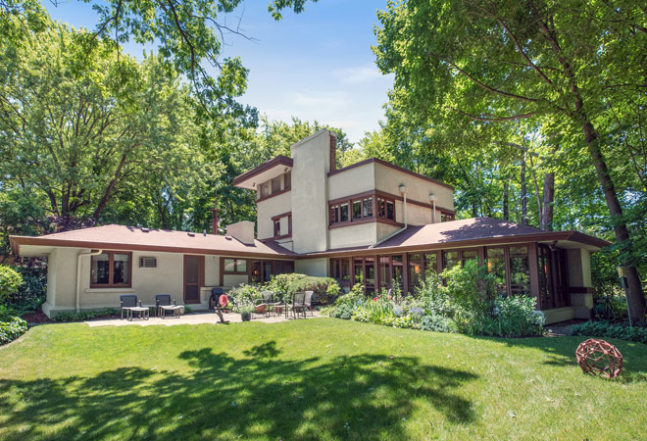
The Sherman Booth House
It’s mind blowing to look at a building like FLW’s Sherman Booth House and realize that it was built more than a hundred years ago in 1916. This gorgeous three-story house in Chicago’s Glencoe suburb features 5 bedrooms and 4.5 bathrooms, and even though it’s current owners have made small updates to it over time, it still features nearly all of the original Wright-designed details, like slatted wooden light sconces and screens between all the rooms, an outdoor fireplace, wrap-around windows, and a rooftop deck, which were very, very rare in FLW’s designs. The home is still on the market for $1.9 million, but it makes our list because not only is it a work of art, but because it’s an uncommon design for that particular time in FLW’s career. Link
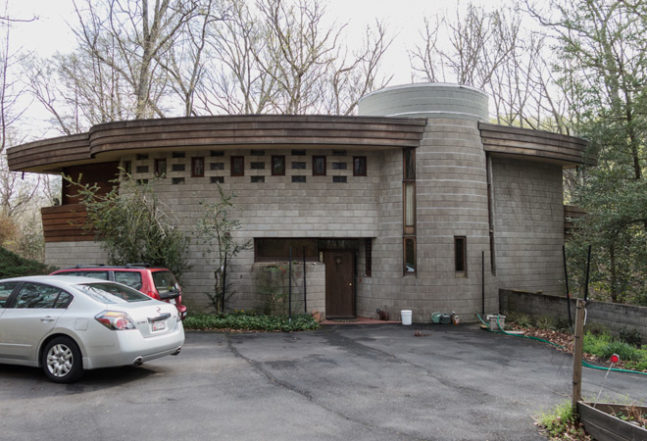
Robert Llewellyn Wright House
Robert Llewellyn Wright was FLW’s sixth child, and in 1953, he designed this home in his honor. We love it because from the outside, it looks kind of like a fortress. It’s a little on the drab side, and offers an agreeably unfriendly disposition. However, the moment you walk inside, you’re greeted by warmth and vibrant color, quirky design, and beautiful décor. The house’s unique shape comprises two intersecting hemicycles, which gives it the look of an eye, and a large concrete block tower that rises above the Philippine mahogany fascia on the roof. What makes this particular house so special is that, aside from being one of only two FLW houses in the entire state of Maryland, it’s also one of a very small number of FLW’s famous “hemicycle” designs of the time period. Link
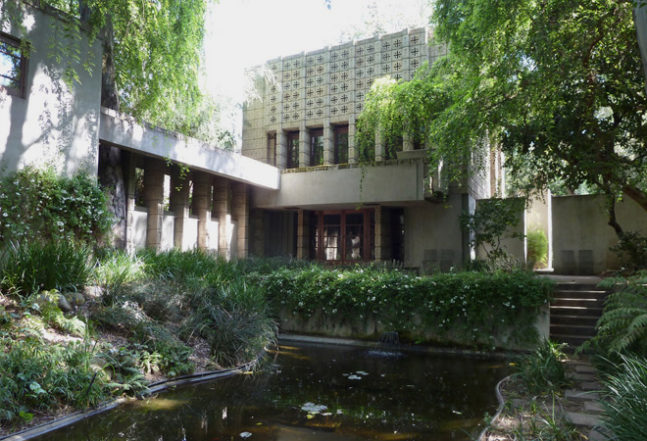
La Miniatura
In the 1920’s, after becoming famous for his Prairie House style of building, FLW turned to the concrete block as a means of broadening his artistic vision. In his autobiography, he writes that he started working with concrete blocks because they were the ugliest things in the building world, likening them to “gutter rats.” Ironically, his famous Millard House, also known as La Miniatura, is considered one of the most beautiful designs of his entire career. The home was designed to cling to the property’s steep ravine, nestled among the lush greenery, and to make the blocks, he actually used sand and gravel located on the property itself. The 2,400-square-foot residence stands three stories high, and all of the floors are either concrete or wood, and the ceilings are either exposed redwood or plaster. It features two terraces, a reflecting pool, a gorgeous two-story living room, concrete block fireplace, three bedrooms, and much, much more. Link
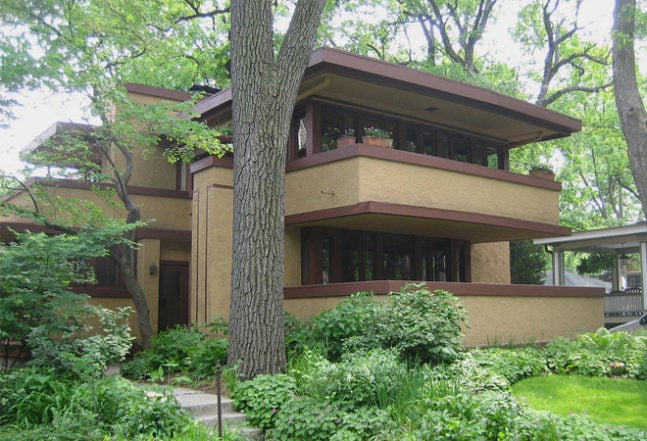
Laura Gale House
Another beautiful first for FLW, this 1909 design is considered an important stepping stone in early modern architecture. For FLW, it was the first time he ever explored using cantilevering in a residential home (Which he’d later incorporate into his famous Fallingwater house 30 years later), as well as his first time designing two stacked balconies in the front of a house. There’s a bunch of abstract geometrical shapes built into the design, as well as a hidden doorway, and the whole house is built around a fireplace. Link

Lykes House
The final home he ever designed is located in the mountains of Phoenix, Arizona, and was built to blend into the mountains surrounding it. The 3 bedroom, 3 bathroom, 3,000-square-foot home features a beautiful floor plan of overlapping concentric circles that flow seamlessly from room to room, curved walls covered with golden Philippine mahogany, a gorgeous 180-degree view of Phoenix from the living room, patio space galore, custom-designed furniture made specifically for the house, and all the other odds and ends that made FLW so famous. It is considered by many to be the man’s crowning jewel, and we might agree. Link
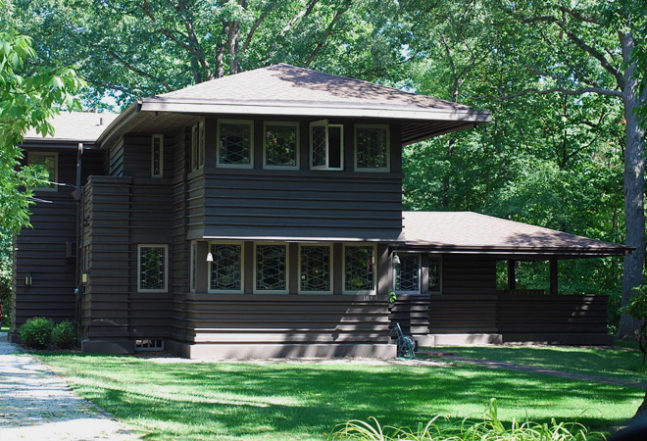
Alice and George Millard House
If you’re looking for telltale FLW design, look no further than his famous—and famously beautiful—Alice and George Millard House, located in Highland Park, Illinois. The massive Japanese style fascia is typical of FLW’s design style, and the house also features 68 completely original art glass windows. The inside is equally gorgeous, and features mahogany wood accents, wood and stone floors, a beautiful covered balcony, and more. Link
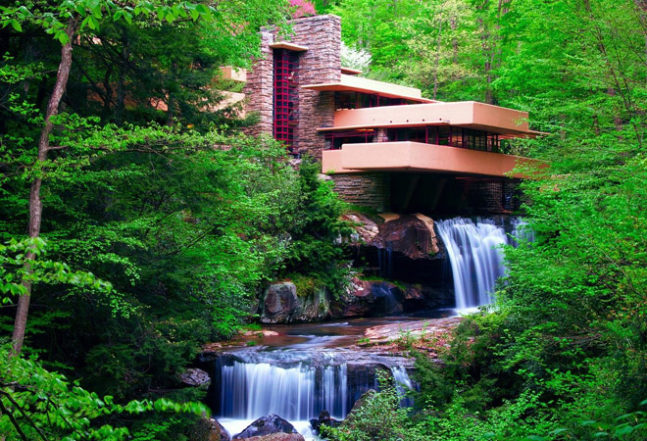
Fallingwater
By any measurable standard, Fallingwater is the crème de la crème of FLW’s career. It incorporates all of the best of his beautiful design-style and the natural waterfall into the overall structural design of the home, and is designated a National Historical Landmark. The best part is that this building, in its entirety, only took FLW two hours to design. What people love so much about Fallingwater aside from its striking design elements and integration into the surrounding natural beauty, is that FLW put so much emphasis on every little detail, from the lack of metal framing where glass meets rock (so as not to interrupt the view and overall aesthetic), to the natural spring that drips through the main house, guest, and servant level, and then back out again. Link

Pappas House
As you can imagine, the Pappas House is a very weird style of design for rural St. Louis County, Missouri. Nevertheless, that didn’t stop FLW from designing the house in 1955. What makes it unique is that the entire house is built from precast, terracotta-tinted concrete blocks. The inside of the house is absolutely gorgeous, and FLW designed every aspect of it, from the floors and ceilings, to the natural Philippine mahogany furniture. Other design elements include floor-to-ceiling windows, four bedrooms, a beautiful terrace, etc. The color palate is one of the most noticeable aspects of this house, and incorporates the use of a spectrum of deep reds, browns, and oranges. It’s easily one of our favorite FLW homes for obvious reasons. Link

